Silk Road Travel from Lanzhou to Xinjiang
Post Time:2020-05-19 Views:
Lanzhou-Xinjiang high-speed railway, stretching through the high-altitude Qilian Mountain range, an ancient section of the Great Wall and five strong-wind zones, began operating in 2014.
It is the first long-distance high-speed line in China's western region connecting Lanzhou, the capital city of northwest China's Gansu Province, with Urumqi, the capital of the Xinjiang Uygur Autonomous Region. It has brought increased travel possibilities for us.
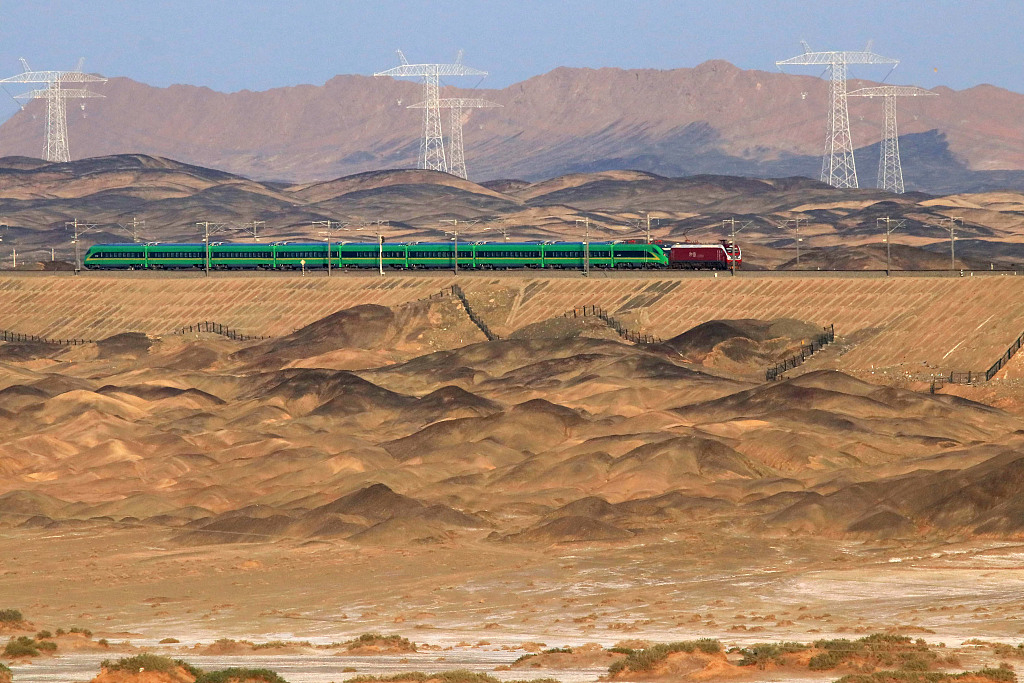
So I would like to recommend some popular silk road travel destinations:
In the sculpture, the tall mother has a graceful figure with her right arm slightly flexing, and she has an affable smiling look with beautiful hair hanging about her shoulders, lying on her back against the roaring Yellow River waves. A lovely baby boy snuggles close to her right side with his eyes slightly looking to the left, smiling unconsciously.
The sculpture has a profound message, and it symbolizes the Chinese people growing sturdily under the parenting of the Yellow River as well as the Chinese people’s persevering spirit that makes the world go round.
Gansu Museum is also quite worth to visit, "The Galloping Horse Treading on a Flying Swallow"(Ma Ta Feiyan) is treasured in the museum.
By the way, If you're interested in Lanzhou, read this post: Lanzhou: More than just noodles.
Best time to Lanzhou?
The best time to travel to Lanzhou is between April and September when it is warm. There isn’t much rain during any month. Even in the summer, a jacket may be necessary.
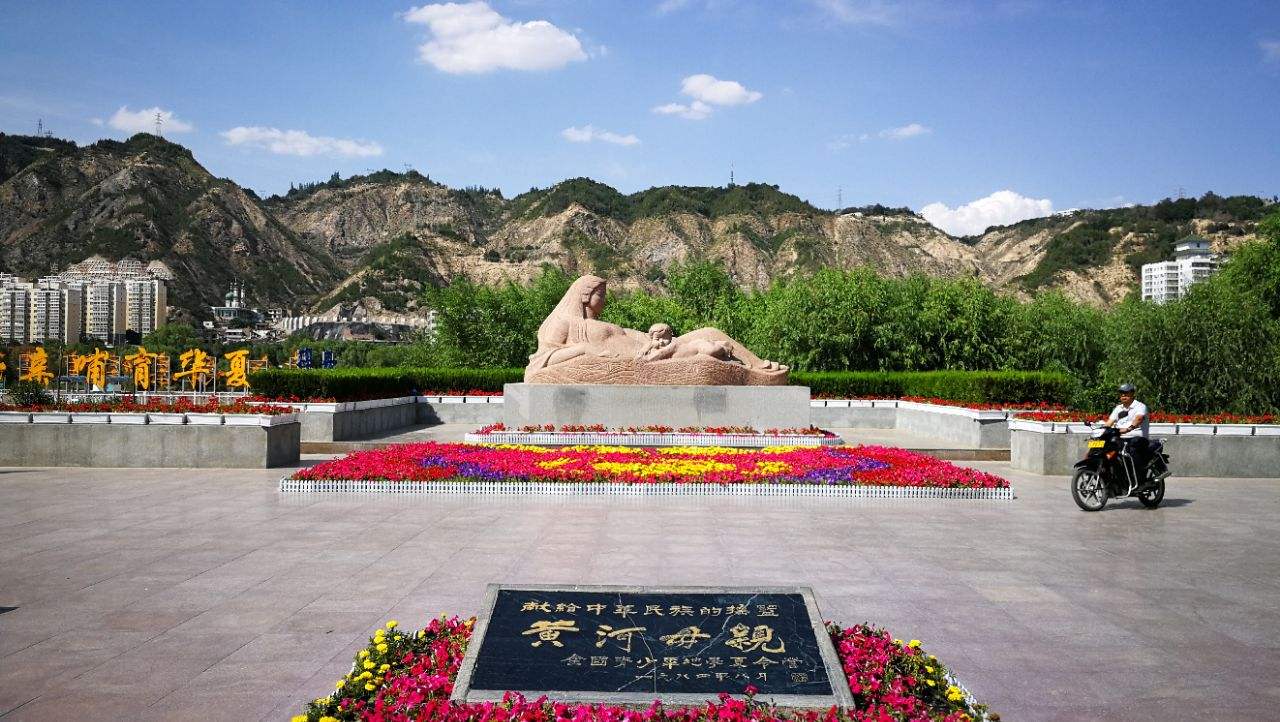
2. Zhangye:
Zhangye, located in Gansu Province of northwest China, is known for its grand and astonishing landscape. There are snow-capped mountains, forests, grasslands, valleys, the gobi desert and wetland
Zhangye Danxia Landform:
Zhangye Danxia landform area is located in northwest China's Gansu Province. It is unbelievable multicolour covering a large area of the cliffs has made the place look like a masterpiece of an oil painting against the canvas of surrounding grey plain. The landform is the result of red sandstone erosion, together with its geological structure and long term desert conditions, wind and water erosion. The great force of nature has its great artwork emerged.
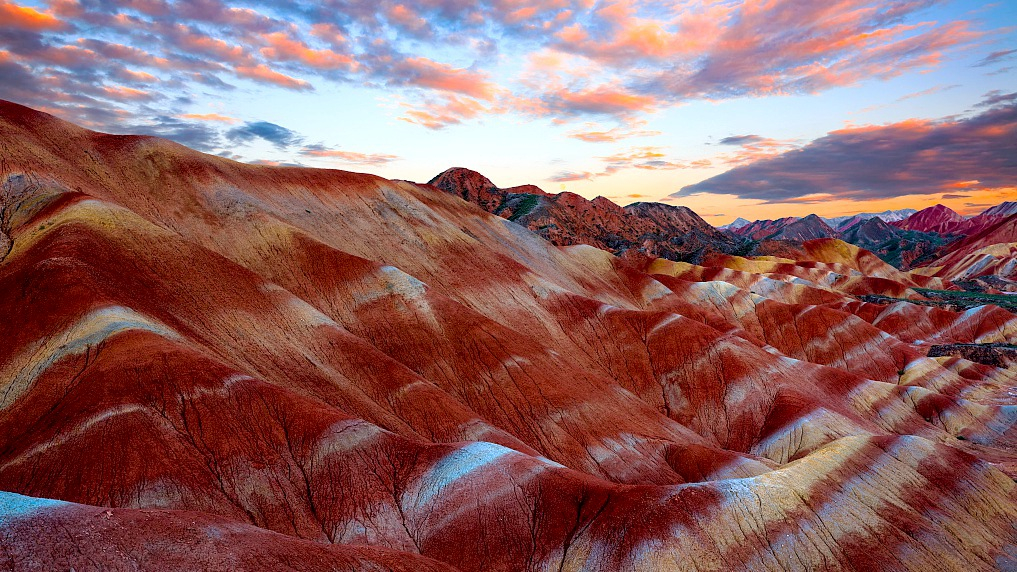
When is the best time to visit?
Marco Polo spent a year here around 1274 and wrote in his book "The Travels of Marco Polo" that this region was an international trade market. Nowadays, it has turned into a tourism city that attracts many people. June and July each year are the best months to visit Zhangye National Geopark. During the rainy season, the water can cool you from the summer heat and add moisture to the air.
It is best to visit in the morning and at dusk, especially at sunset, when the colours change continuously, showing yellow and red layers covered by a light grey layer.
Approximate sunset time: 7:30 pm in spring and autumn; 8:00 pm in summer.
3. Dunhuang
Set on the edge of the Silk Road, Dunhuang may seem like an unlikely place to find an oasis of Buddhist art. With towering dunes in the background, the caves here reflect the power of divine inspiration. Dunhuang City, in northwest China's Gansu Province, is a pearl on the ancient Silk Road. It is more than a city's name, it's a witness to the history of cultural treasures that date back thousands of years.
The first of the city's eponymous grottoes was built in 344 AD, spawning a collection of caves that have become symbolic of the city.
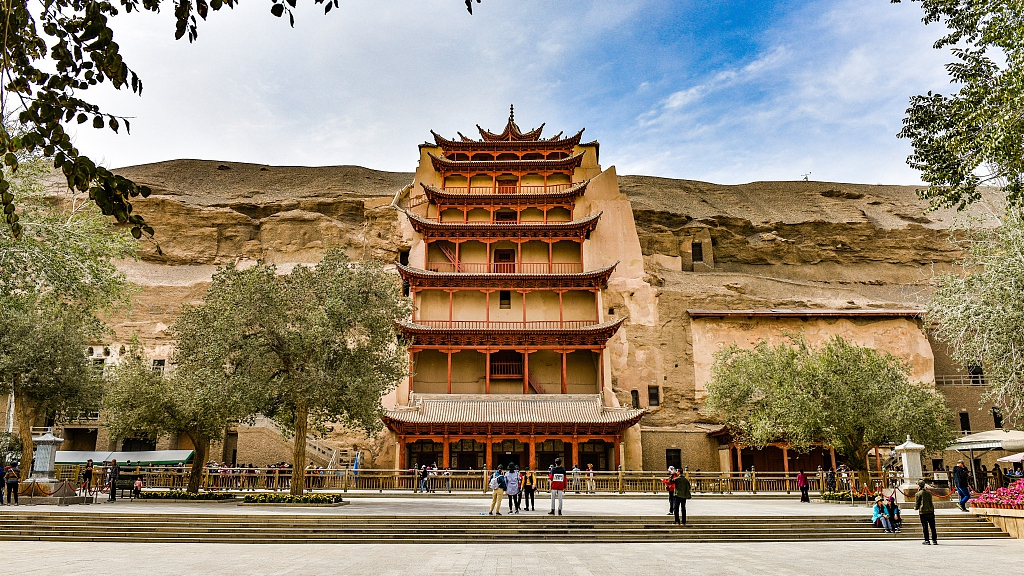
Mogao Grottoes:
The Mogao Grottoes are commonly known as the Caves of a Thousand Buddhas. With a large number of murals, grottoes, cultural relics to name just a few, it is a world-famous Buddhist art resort. Here you can enjoy the magnificent grottoes and mural art, and learn the history of Buddhism in Dunhuang through explanation and film display, which is the best option for tourists to visit Dunhuang.
continue to visit you will find that the caves are filled with Buddha statues, flying Apsaras, Kabuki music, fairies, and so on. There are not only sitting statues up to nine stories but also small Bodhisattvas of more than ten centimetres, it is quite numerous and in different shapes, which is worth to visit.
If you're interested in Dunhuang frescoes, read this post: Explore the Flying Apsaras in Mogao Grottoes.
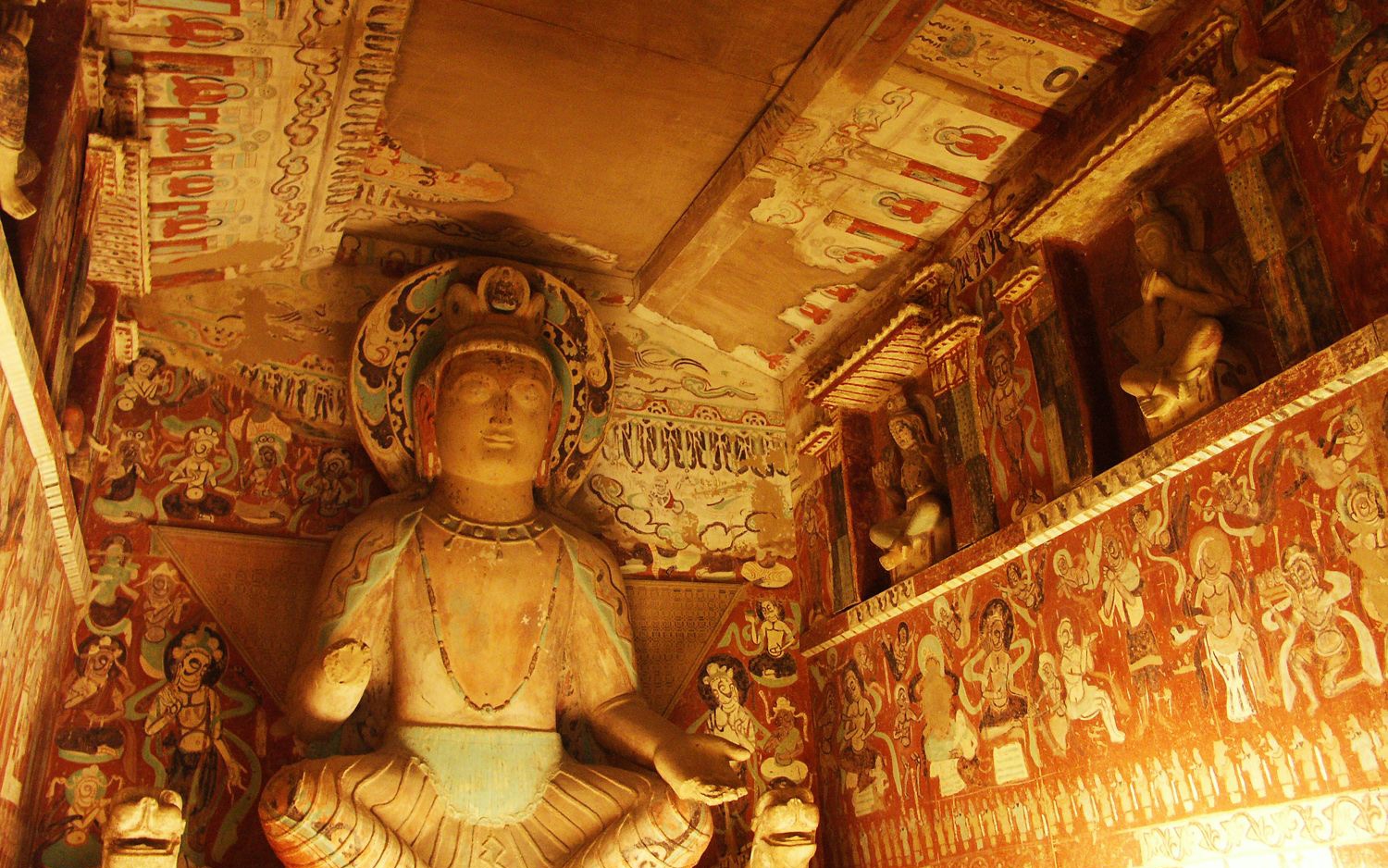
4. Turpan:
An ancient Silk Road trading post, Tupan oasis is surrounded by desert and mountains ruined cities and Thousand Buddha Caves.
The Flaming Mountains:
Standing on the Flaming Mountains, it will be a great opportunity to take pictures. Made famous by the ancient Chinese classic novel Journey to the West, the surfaces of these desiccated mountains have been whipped into the shape of flames by howling desert winds. Under the relentless heat of the midday sun, the mountains radiate heat and with a dash of imagination, may appear to be on fire.
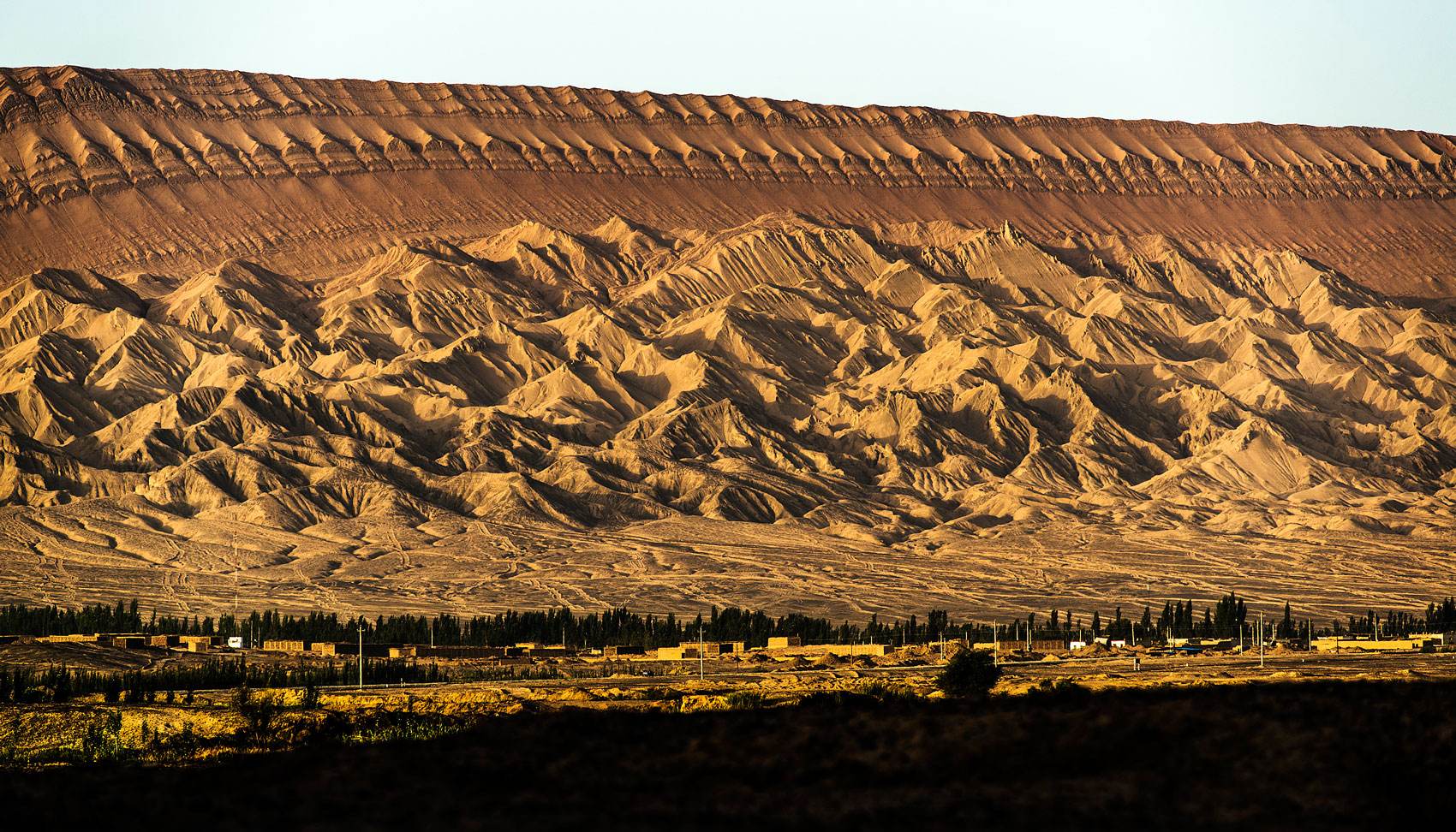
Karez Irrigation Site:
One of the most interesting stops on the tour is a Karez Irrigation Site. It's the site the locals are most proud of, and rightfully so-the irrigation method is probably their greatest contribution to desert dwellers and has been employed as far away as Afghanistan and Iran. More than 2,000 years ago, it was developed as a way to bring the snowmelt waters of the Tian Shan to the city through a series of wells dug into underground water channels. By transporting the water underground, they were able to prevent evaporation and to keep dust and dirt out of their water supply. The Karez Irrigation Site is like a museum explaining how the wells are built and maintained and even includes a sample channel and well that you can explore.
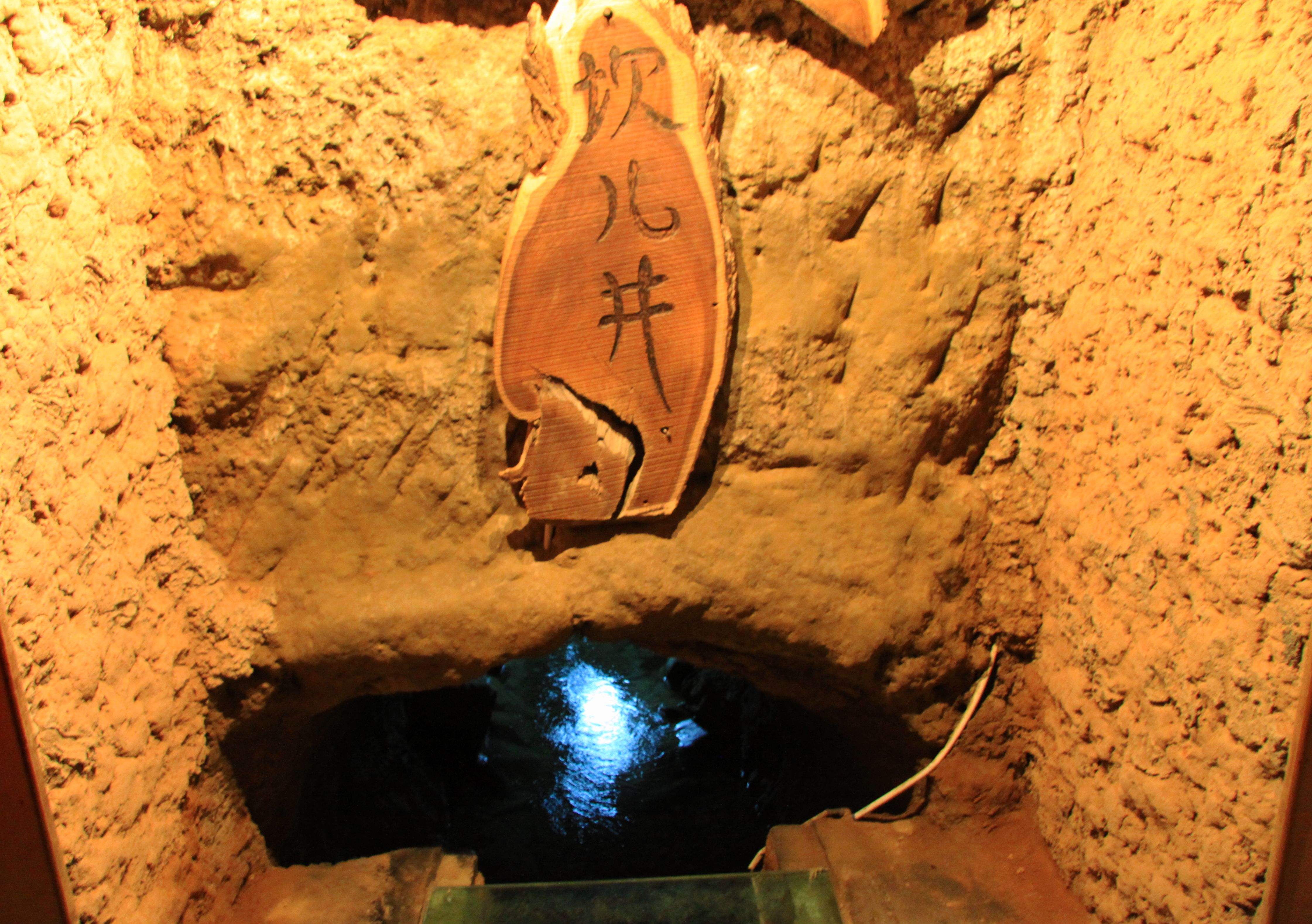
Jiaohe Ruins:
The Jiaohe Ruins was built during the Han dynasty as a Chinese garrison town to defend the borderlands, it's less romantic but better preserved than Gaochang. Although the town was razed by Genghis Khan and his Mongol army, many structures maintain some semblance of their original form. Roads lead clearly through the town and a monastery with statues of the Buddha still stands. The town was built on an island at the confluence of two rivers. As the tours usually stop here in the late afternoon, the sunlight turns the stone almost golden and shutterbugs can have a field day.
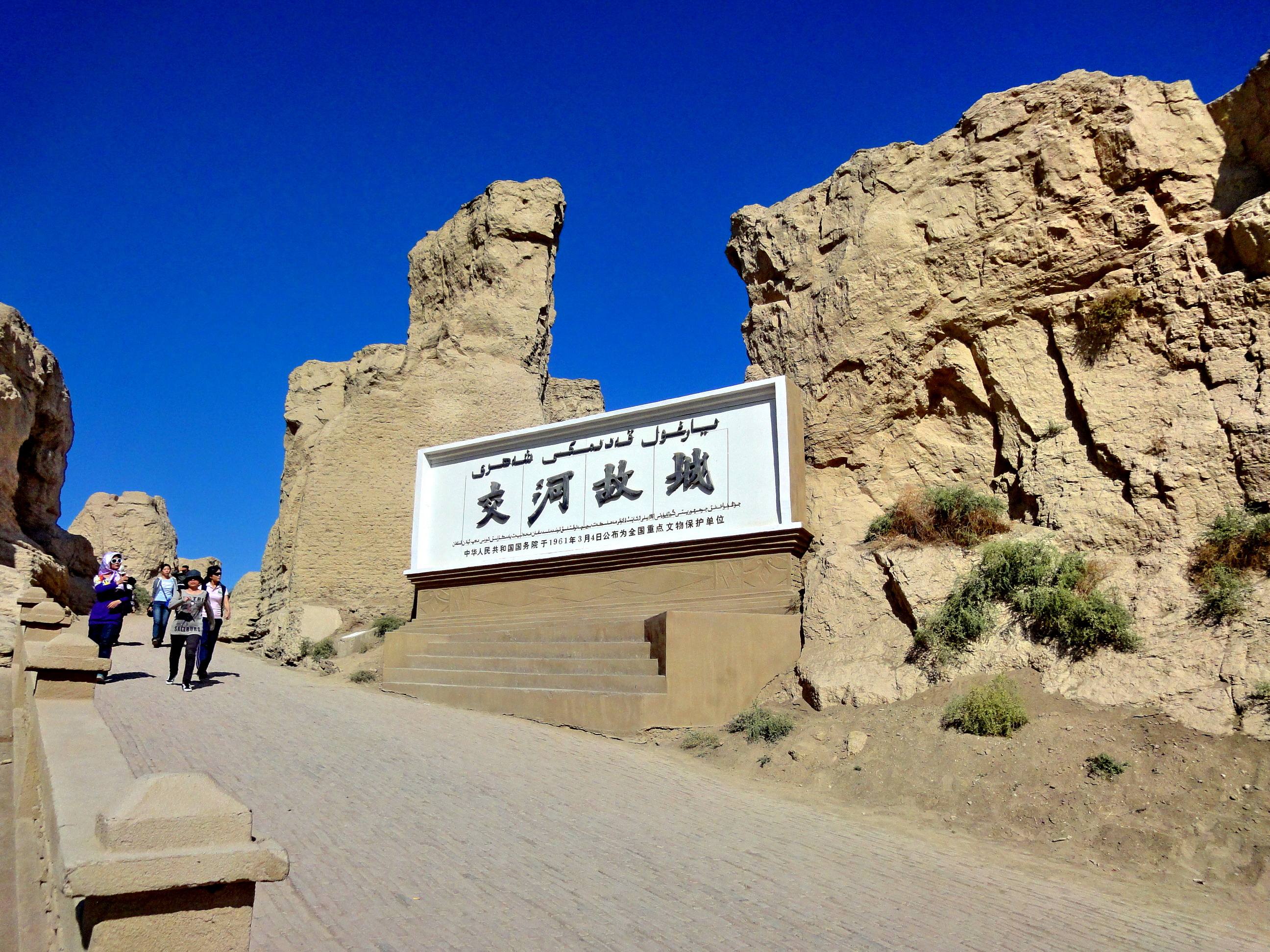
Best time to visit:
Though summer is blisteringly hot with temperatures going up to 48 degree Celsius, it's also the peak travel time and when the town moves into full swing to cater to tourists. Though spring may be cooler, there are often sandstorms that are much harder to deal with than the heat. Fall is probably the ideal time to be here through the winter can come on fast, bringing with it the biting cold of the desert. Every 25th August there's the annual Silk Road Turpan Grape Festival at the Turpan Travel and Culture Square.
Recommened Silk Road Tour
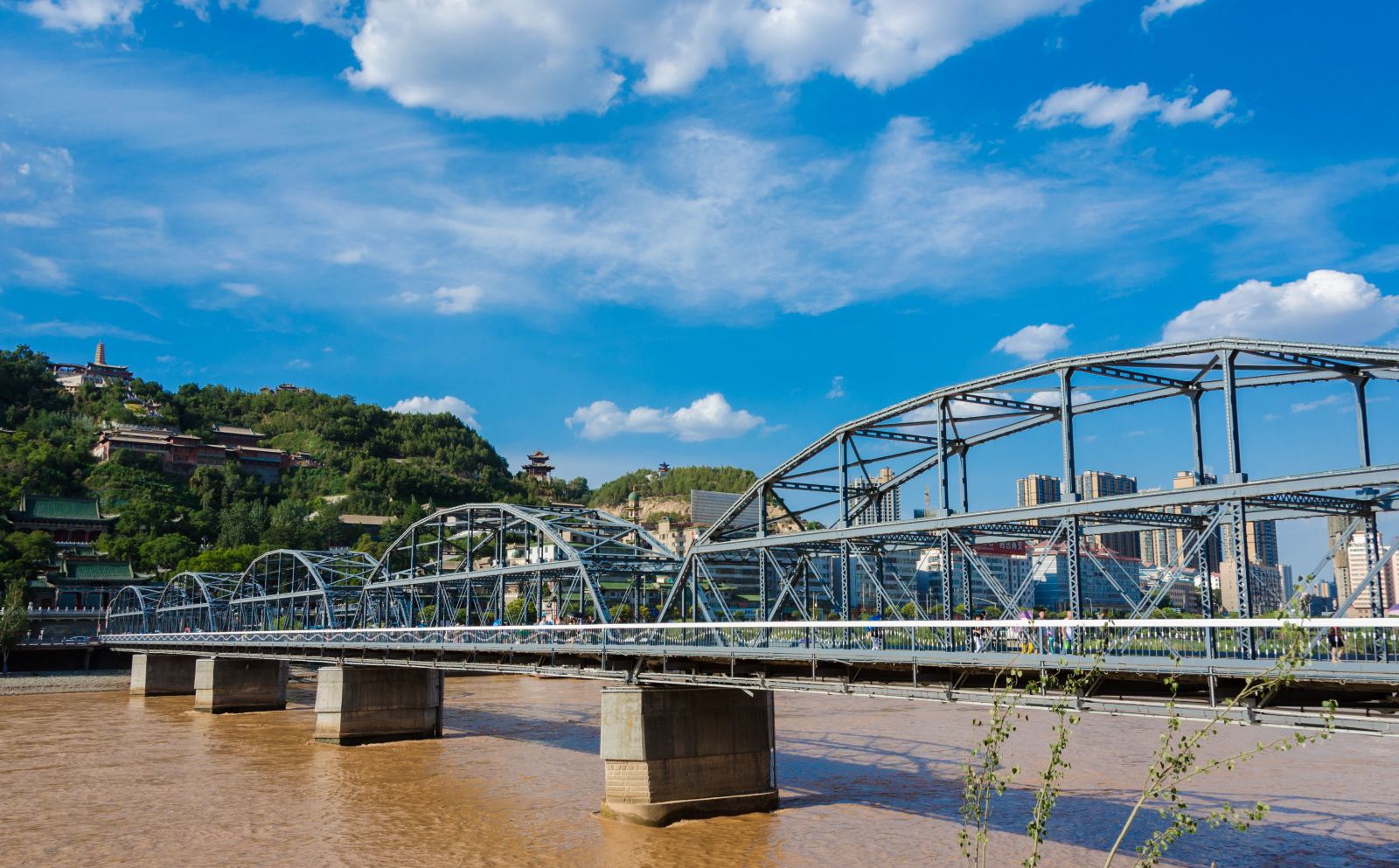 Silk Road Bullet Train Tour
Silk Road Bullet Train Tour 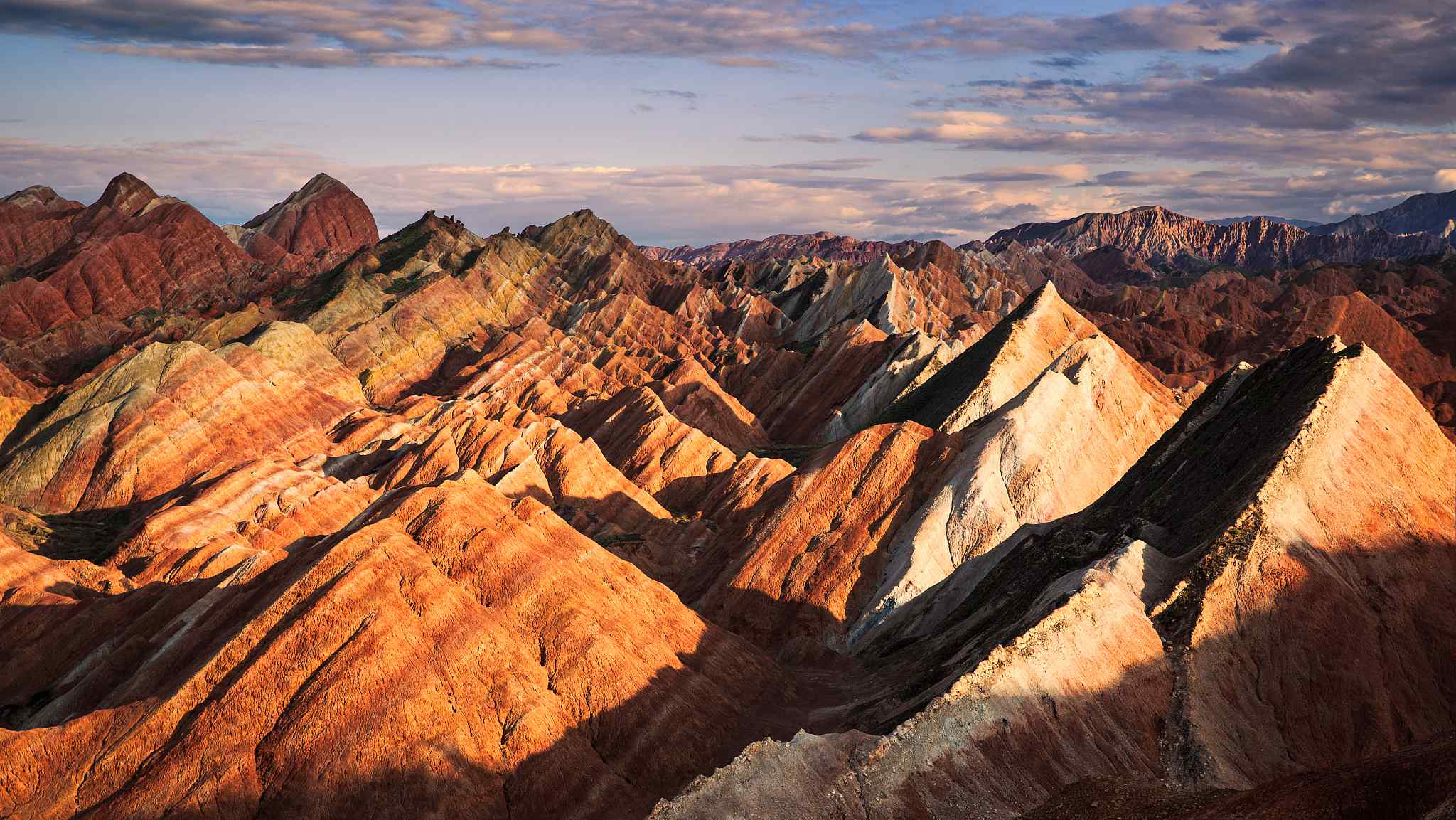 Danxia Rainbow Mountain Photography Tour
Danxia Rainbow Mountain Photography Tour
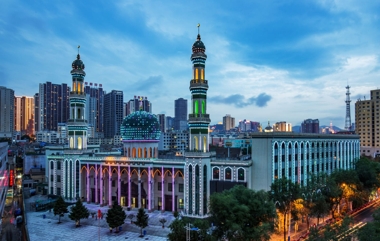 Silk Road Muslim Tour
Silk Road Muslim Tour 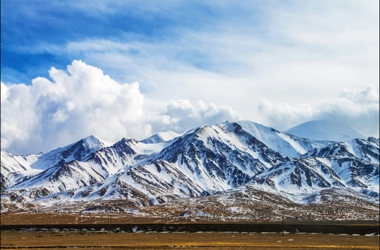 12 Days Silk Road Travel to Qinghai-Gansu and Xinjiang
12 Days Silk Road Travel to Qinghai-Gansu and Xinjiang
It is the first long-distance high-speed line in China's western region connecting Lanzhou, the capital city of northwest China's Gansu Province, with Urumqi, the capital of the Xinjiang Uygur Autonomous Region. It has brought increased travel possibilities for us.

So I would like to recommend some popular silk road travel destinations:
1. Lanzhou:
When you visit Lanzhou, you must see the Yellow River Mother Sculpture, it is a granite-structured full relief that’s composed of a mother and a baby boy. The pedestal of the sculpture is carved with patterns of ripples and fishes, which derive from the ancient painted pottery patterns of Gansu, fully reflecting the long history of Gansu Province.In the sculpture, the tall mother has a graceful figure with her right arm slightly flexing, and she has an affable smiling look with beautiful hair hanging about her shoulders, lying on her back against the roaring Yellow River waves. A lovely baby boy snuggles close to her right side with his eyes slightly looking to the left, smiling unconsciously.
The sculpture has a profound message, and it symbolizes the Chinese people growing sturdily under the parenting of the Yellow River as well as the Chinese people’s persevering spirit that makes the world go round.
Gansu Museum is also quite worth to visit, "The Galloping Horse Treading on a Flying Swallow"(Ma Ta Feiyan) is treasured in the museum.
By the way, If you're interested in Lanzhou, read this post: Lanzhou: More than just noodles.
Best time to Lanzhou?
The best time to travel to Lanzhou is between April and September when it is warm. There isn’t much rain during any month. Even in the summer, a jacket may be necessary.

2. Zhangye:
Zhangye, located in Gansu Province of northwest China, is known for its grand and astonishing landscape. There are snow-capped mountains, forests, grasslands, valleys, the gobi desert and wetland
Zhangye Danxia Landform:
Zhangye Danxia landform area is located in northwest China's Gansu Province. It is unbelievable multicolour covering a large area of the cliffs has made the place look like a masterpiece of an oil painting against the canvas of surrounding grey plain. The landform is the result of red sandstone erosion, together with its geological structure and long term desert conditions, wind and water erosion. The great force of nature has its great artwork emerged.

When is the best time to visit?
Marco Polo spent a year here around 1274 and wrote in his book "The Travels of Marco Polo" that this region was an international trade market. Nowadays, it has turned into a tourism city that attracts many people. June and July each year are the best months to visit Zhangye National Geopark. During the rainy season, the water can cool you from the summer heat and add moisture to the air.
It is best to visit in the morning and at dusk, especially at sunset, when the colours change continuously, showing yellow and red layers covered by a light grey layer.
Approximate sunset time: 7:30 pm in spring and autumn; 8:00 pm in summer.
3. Dunhuang
Set on the edge of the Silk Road, Dunhuang may seem like an unlikely place to find an oasis of Buddhist art. With towering dunes in the background, the caves here reflect the power of divine inspiration. Dunhuang City, in northwest China's Gansu Province, is a pearl on the ancient Silk Road. It is more than a city's name, it's a witness to the history of cultural treasures that date back thousands of years.
The first of the city's eponymous grottoes was built in 344 AD, spawning a collection of caves that have become symbolic of the city.

Mogao Grottoes:
The Mogao Grottoes are commonly known as the Caves of a Thousand Buddhas. With a large number of murals, grottoes, cultural relics to name just a few, it is a world-famous Buddhist art resort. Here you can enjoy the magnificent grottoes and mural art, and learn the history of Buddhism in Dunhuang through explanation and film display, which is the best option for tourists to visit Dunhuang.
continue to visit you will find that the caves are filled with Buddha statues, flying Apsaras, Kabuki music, fairies, and so on. There are not only sitting statues up to nine stories but also small Bodhisattvas of more than ten centimetres, it is quite numerous and in different shapes, which is worth to visit.
If you're interested in Dunhuang frescoes, read this post: Explore the Flying Apsaras in Mogao Grottoes.

4. Turpan:
An ancient Silk Road trading post, Tupan oasis is surrounded by desert and mountains ruined cities and Thousand Buddha Caves.
The Flaming Mountains:
Standing on the Flaming Mountains, it will be a great opportunity to take pictures. Made famous by the ancient Chinese classic novel Journey to the West, the surfaces of these desiccated mountains have been whipped into the shape of flames by howling desert winds. Under the relentless heat of the midday sun, the mountains radiate heat and with a dash of imagination, may appear to be on fire.

Karez Irrigation Site:
One of the most interesting stops on the tour is a Karez Irrigation Site. It's the site the locals are most proud of, and rightfully so-the irrigation method is probably their greatest contribution to desert dwellers and has been employed as far away as Afghanistan and Iran. More than 2,000 years ago, it was developed as a way to bring the snowmelt waters of the Tian Shan to the city through a series of wells dug into underground water channels. By transporting the water underground, they were able to prevent evaporation and to keep dust and dirt out of their water supply. The Karez Irrigation Site is like a museum explaining how the wells are built and maintained and even includes a sample channel and well that you can explore.

Jiaohe Ruins:
The Jiaohe Ruins was built during the Han dynasty as a Chinese garrison town to defend the borderlands, it's less romantic but better preserved than Gaochang. Although the town was razed by Genghis Khan and his Mongol army, many structures maintain some semblance of their original form. Roads lead clearly through the town and a monastery with statues of the Buddha still stands. The town was built on an island at the confluence of two rivers. As the tours usually stop here in the late afternoon, the sunlight turns the stone almost golden and shutterbugs can have a field day.

Best time to visit:
Though summer is blisteringly hot with temperatures going up to 48 degree Celsius, it's also the peak travel time and when the town moves into full swing to cater to tourists. Though spring may be cooler, there are often sandstorms that are much harder to deal with than the heat. Fall is probably the ideal time to be here through the winter can come on fast, bringing with it the biting cold of the desert. Every 25th August there's the annual Silk Road Turpan Grape Festival at the Turpan Travel and Culture Square.
Recommened Silk Road Tour
 Silk Road Bullet Train Tour
Silk Road Bullet Train Tour  Danxia Rainbow Mountain Photography Tour
Danxia Rainbow Mountain Photography Tour  Silk Road Muslim Tour
Silk Road Muslim Tour  12 Days Silk Road Travel to Qinghai-Gansu and Xinjiang
12 Days Silk Road Travel to Qinghai-Gansu and Xinjiang  Xinjiang China Travel is specialiesed in organizing the Classic Ancient Silk Road Tour,and we are the professional Xinjiang Tour experts.We arrange both large and small group tours and specialize in vacation planning. We pride ourselves in helping people plan the vacation adventure that is right for them. Even only one person coming, we also can provide personalized service for you. With many years of experiencebehind us,we always offer the best value,most comfort and flexible tour for you,you will never feel rush and tired.
Xinjiang China Travel is specialiesed in organizing the Classic Ancient Silk Road Tour,and we are the professional Xinjiang Tour experts.We arrange both large and small group tours and specialize in vacation planning. We pride ourselves in helping people plan the vacation adventure that is right for them. Even only one person coming, we also can provide personalized service for you. With many years of experiencebehind us,we always offer the best value,most comfort and flexible tour for you,you will never feel rush and tired.
Our Blog
- Silk Road Private Tour
- Silk Road Train Tours
- Silk Road Tour for Senior Citizens
- Silk Road Tour from Malaysia
- Silk Road Travel from Australia
- Silk Road Tours in 2020
- Zhang Qian's Mission to the Western...
- Chinese Food Culture
- Mogao Cave 275 (Northern Liang 421-...
- Xuanzang: A Buddhist Pilgrim on the...



